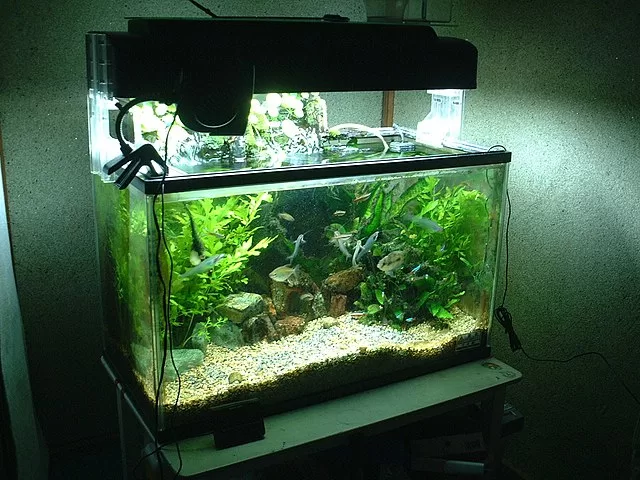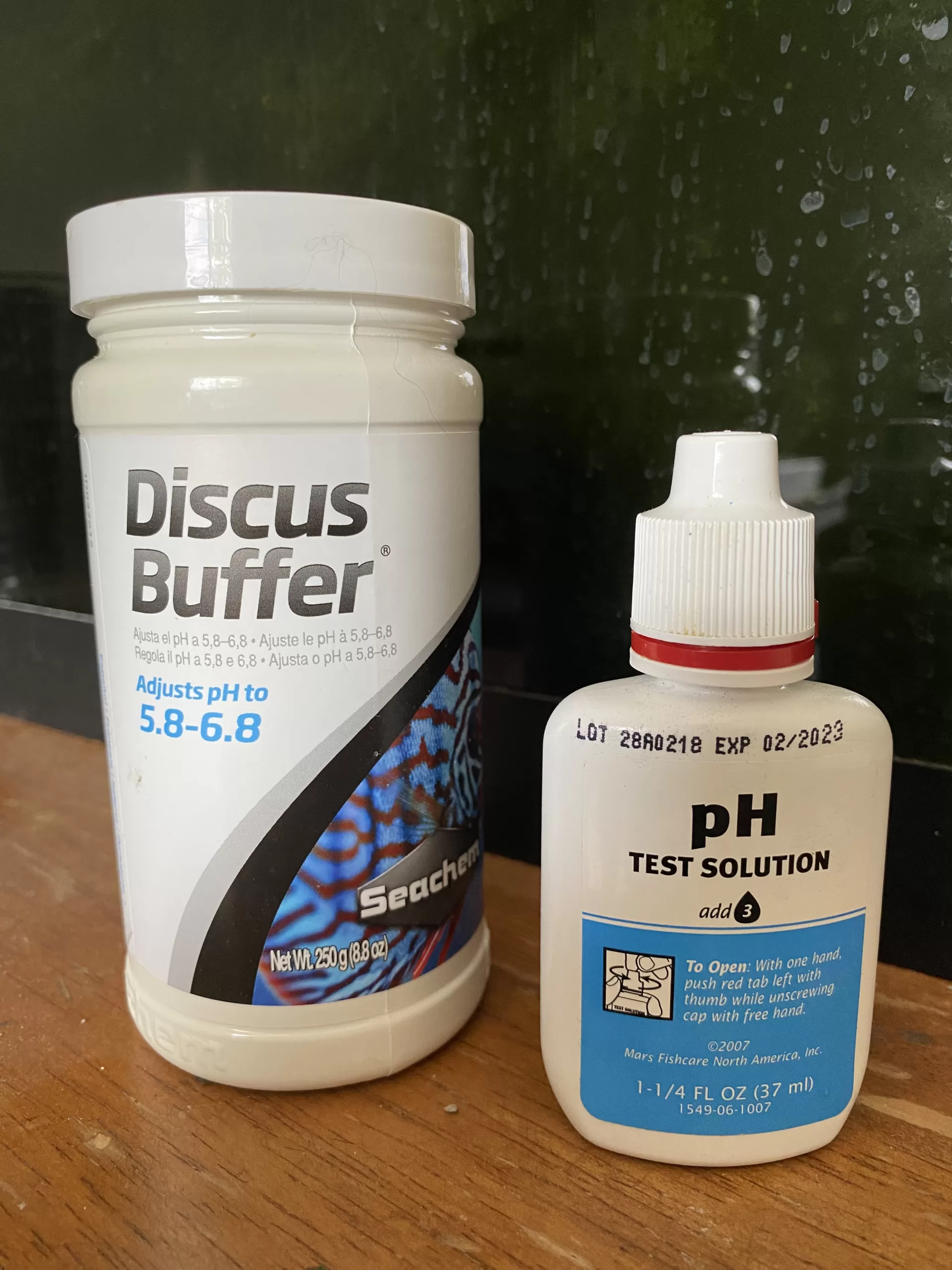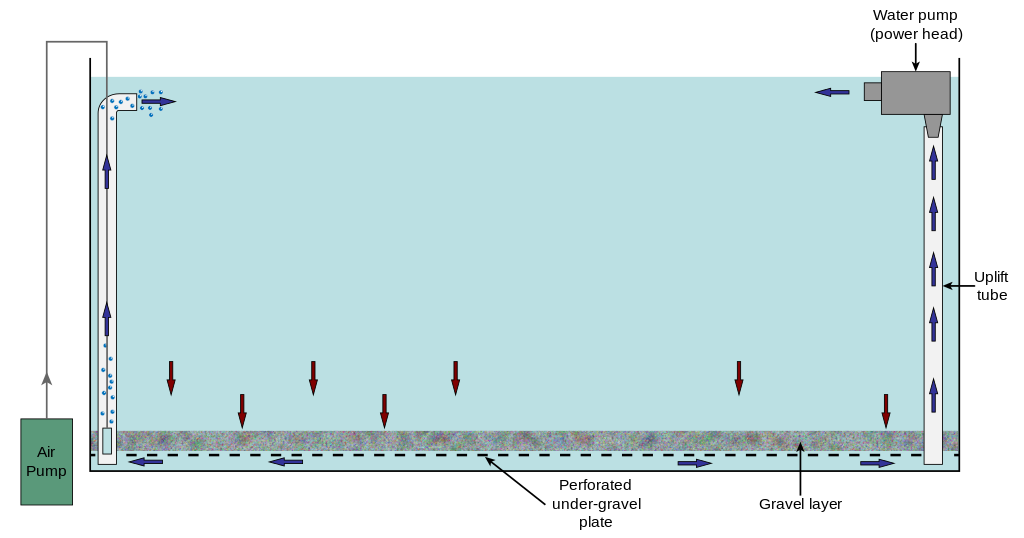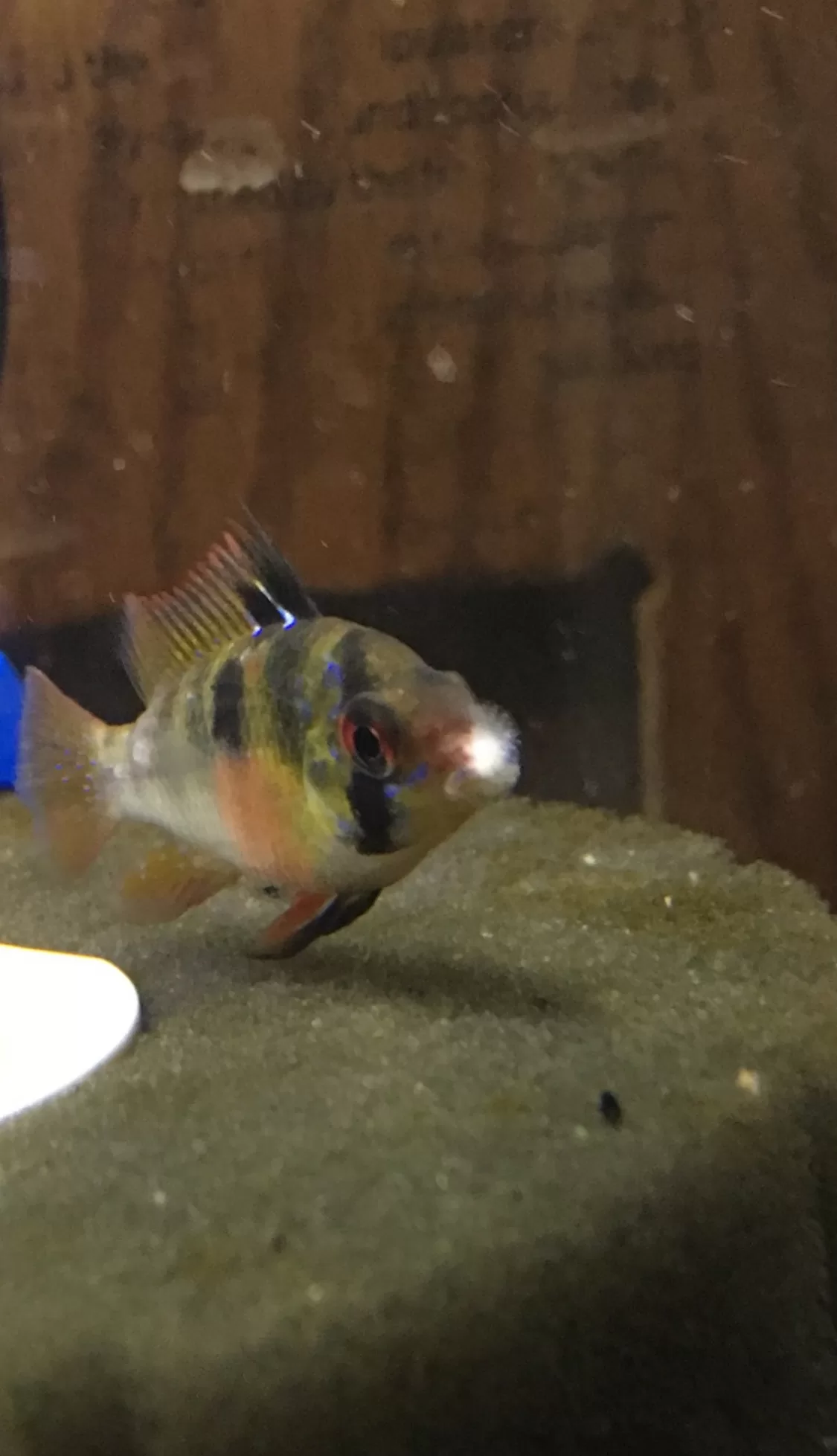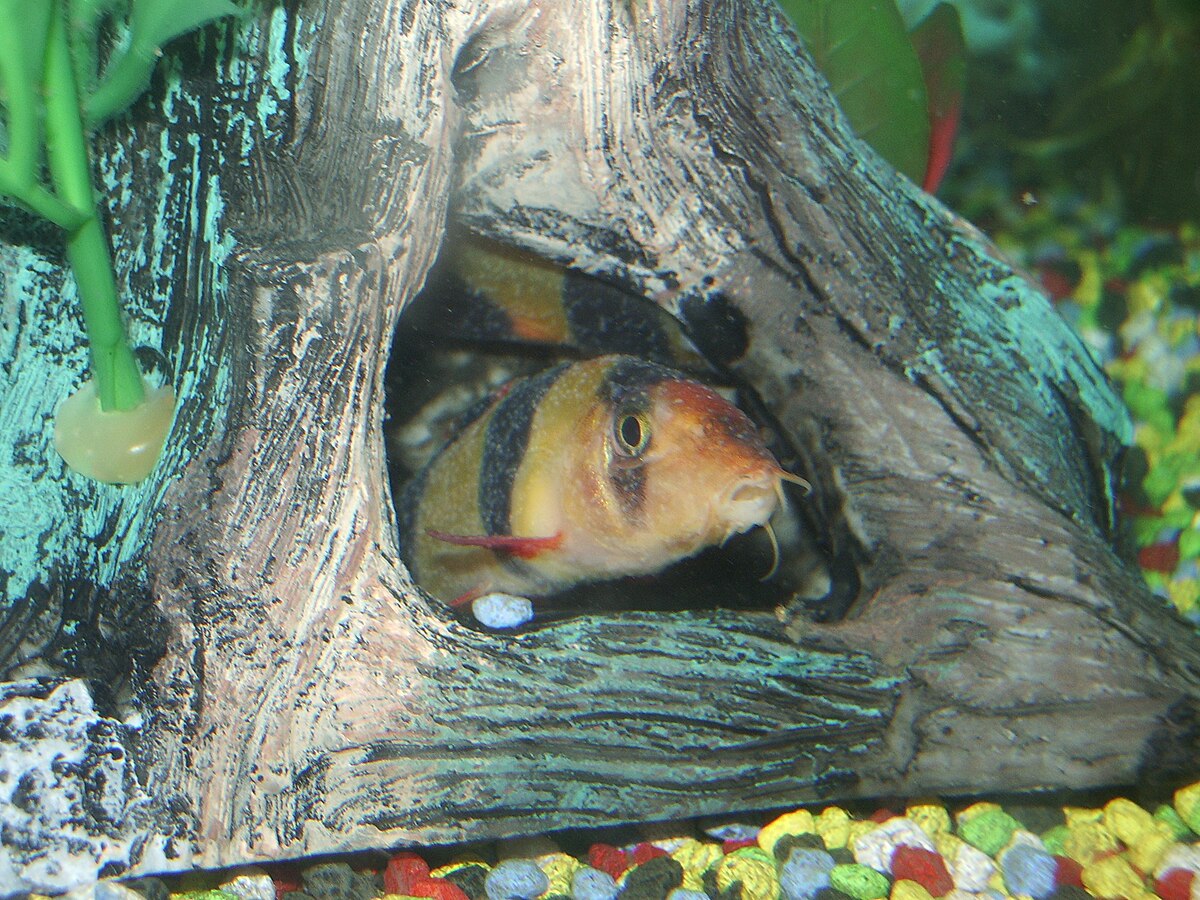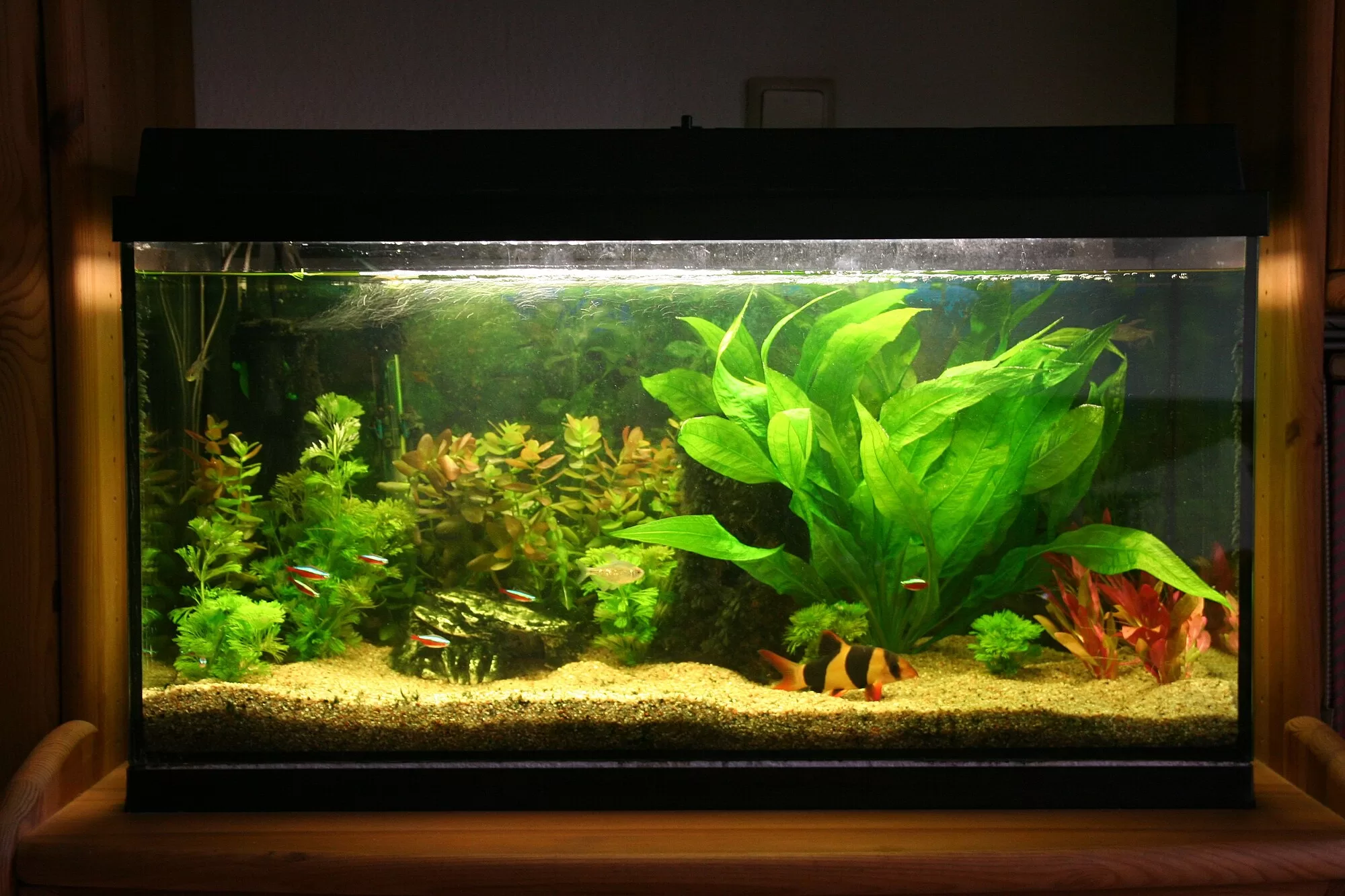When I first gave aquarium plants a shot, it was in a little 20-gallon long. I bought a cheap full-spectrum Aquaneat aquarium light from Amazon for 20 bucks. While it worked for my low-tech setup in a short tank, it would not be ideal for taller tanks or high-tech setups.
If you’re just getting into planted aquariums and don’t know what kind of aquarium light you need to grow your plants, then this is the guide for you! I will go over everything you need to know about aquarium lights so that you can get started on your planted tanks at home.
Understanding Your Tank Setup: High Tech vs. Low Tech
Before you start looking into lights, you first need to understand what kind of setup you’re going with. To prevent overwhelming people with information, we’re just going to talk about low-tech and high-tech setups. There is technically a medium setup as well, but we won’t cover that. I would recommend everyone new to planted tanks start off easy with a low-tech setup. It’s cheaper and has more room for error.
High Tech Setups
High-tech setups are much more advanced. They require more/better equipment, more maintenance, and more money. Usually, these setups will have CO2 injection (not liquid CO2), which in itself is something that requires careful calculation. You need a strong light and fertilizer to complement CO2 injection or you will create an imbalance.
For example, if you over-light your tank and use liquid fertilizer but don’t use CO2, you will be taken over by algae because your plants are missing a key component to go with the strong light and fertilizer. Similarly, if you use a cheap light that isn’t strong, but uses CO2 and fertilizer, algae will take over.
To simplify this, what I’m saying is that a high-tech tank requires, first of all, plants that like higher light and nutrients. You need a strong full spectrum light, proper fertilizer, and injected CO2. This kind of setup can be quite expensive, but rewarding and beautiful.
Low-Tech Setups
Opposite of high-tech setups, we have low-tech setups. These are the types of setups I recommend to beginners who are new to planted tanks. You’ll want to select easy low maintenance aquarium plants that don’t require high light or injected CO2. All you really need is a full spectrum light and an all-in-one liquid fertilizer like Aquarium Co-Op Easy Green. It’s even possible to get away with no added fertilizer if you have decent tap water and a tank with sufficient nitrogen.
Understanding Light: PAR, Lumens, and Kelvin
PAR (Photosynthetically Active Radiation)
PAR, which stands for photosynthetically active radiation, measures the amount of usable light that plants use for photosynthesis. If the PAR rating is higher, that means the light is giving off more usable light for your plants to utilize. This is not just a measurement of all light given off only usable.
Low-tech tanks should have a par between 10-30 µmol/m²/s, medium tech between 30-50 µmol/m²/s, and high tech between 50-100 µmol/m²/s.
| Light Level | PAR Range (µmol/m²/s) |
|---|---|
| Low Light | 10-30 |
| Medium Light | 30-50 |
| High Light | 50-100 |
Kelvin (Color Temperature)
Kelvin is something that actually doesn’t directly affect plant growth, instead, it’s a way to measure color temperature to the human eyes. Take a look at the lightbulbs in your house, or just in public and you’ll notice that they’re always a shade of yellow to white. The more yellow it is the warmer or lower Kelvin level it is, and the more white like daylight it is the warmer or higher Kelvin level it is.
Now while Kelvin does not directly affect plant growth so to speak, it’s assumed to be beneficial to replicate natural sunlight, which technically has a kelvin rating between 5000 and 7000. So ideally, your aquarium light should be within this range.
Understanding Lumens
Lumens, similar to Kelvin, is a measurement based on the perception by the human eyes and is not directly related to plant growth. Instead of color or temperature with Kelvin, Lumens are a measurement of brightness. For example, one standard candle flame is about 12.5 Lumens.
While Lumens do not measure the usable light for plants, they can be used as a balance with PAR to ensure that your aquarium light is properly hitting all parts of the tank. In other words, even if you have a powerful enough light in terms of PAR, Lumens is a good way to make sure that light is spreading out properly.
| Tank Type | Lumens per Liter | Lumens per Gallon |
|---|---|---|
| Low Tech Tanks | 15-25 | 60-100 |
| Medium Tech Tanks | 25-50 | 100-200 |
| High Tech Tanks | 50-75 or more | 200-300 or more |
Types of Aquarium Lights
There are several types of lights you can buy, some are better than others.
LED Aquarium Lights
If you look around at any kind of light bulb these days, there has been a massive shift over the last few decades to LED. The same is true for aquarium lights. Not only do they use way less energy, but they also last much longer than other types of lights. They are also more customizable, which allows you to have different colored lights (blue, red, white) in the same fixture. These lights are also capable of replicating sunrise and sunset, among all other light intensities of the day to be as close to natural sunlight as possible.
Fluorescent Aquarium Lights
Fluorescent lights are pretty old-school nowadays, but they’re still available. They’re long cylinder-shaped bulbs that you screw into a fixture like any other light bulb. There are T5 and T8 bulbs, T5 being more powerful than T8. While they’re initially cheaper than LED, they have a long-term cost (albeit not much) of replacing them when they go out. They can work really well for both low-tech and high-tech tanks, but they’re less customizable and use more energy than LEDs.
Metal Halide Aquarium Lights
Metal halide lights are typically used in marine aquariums, not freshwater aquariums. Specifically, they’re used in deep marine tanks with live coral. This is because they are extremely intense lights that are capable of penetrating deep water more efficiently than other types of aquarium lights. They are more expensive and require more energy than the other types of lights. So they’re good for deep tanks with light demanding plants or coral.
How to Choose the Right Aquarium Light
Consider Your Plants
Different plants will require different amounts and intensities of light. You have your low-light plants like Java Fern, Anubias, and mosses that are good choices for a low-tech tank. Then you have your medium light plants like Crypts and Swords, which are good for medium tech setups with moderate light. Lastly, you have your high-light plants like red and carpeting plants which are good for high-tech setups. It’s important to research and understand your plant’s lighting requirements before you even set up your planted aquarium.
Tank Size and Depth
Tank size and depth are crucial factors in picking the best aquarium light. A light that works well on a 20-gallon long might not be good enough for a 20-gallon tall because of the height difference will cause a difference in intensity between the two tanks. Additionally, you’ll want to factor in how large or tall your plants grow. An Amazon sword plant can get very tall, and so you might not need an intense light because when it becomes larger it will be closer to the light.
To be accurate, consider buying a PAR meter so you know how much light your plants are actually getting.
On a 20-gallon long for example, a Finnex Stringray would supply medium light, whereas on a 20-gallon tall it would supply low light. If you want high light, consider a Finnex Planted 24/7 on your 20-long. A Finnex 24/7 would supply your 20 tall with medium lighting. If you want high light on a 20-tall, consider using a Planted 24/7 in addition to a Stingray or even two Planted 24/7 lights. This leads into our next section about budget.
Budget
As you might notice, the more advanced or high-tech you get, the more expensive the lighting will become. Fluorescent lights are the cheapest but require changing every so often and you can’t customize them much. LEDs are a bit more expensive but require less energy and you don’t have to replace the bulbs. They also allow for a lot more customization than other lights. Lastly, metal halide lights are the most expensive and use the most energy, but they are the most powerful lights out of the three.
Depending on these various factors, you need to have a budget. You might only spend $30 for a low-light setup, or you might spend $300 for a high-light setup.
Setting Up and Adjusting Your Light
Duration
Most tanks do well with 7-10 hours of light per day. You should adjust this time as necessary. For example, if you experience an algae issue, cut back on your light each day. Using a timer is important to make sure that you’re consistent. Plants expect the light to be on the same schedule each day in the wild, so your tank should be too. Some lights come with built-in timers, but you might need to buy a timer separately if not.
Intensity
Adjust the intensity based on your plants. As we discussed before, you need to select the appropriate light for your tank and plants. Using a PAR meter can help you determine how much light is being given off.
Full Spectrum
Be sure that your aquarium light is full spectrum, which means it supplies the light needed for all stages of plant growth. In other words, this light mimics the light spectrum that the sun naturally supplies, which is a PAR rating of 400-700nm.
Final Tips For Aquarium Lights
As much as I’d love to give you all a more clear-cut answer, choosing an aquarium light will depend on many different factors that are unique to your setup. Assess your setup, and determine if it’s high-tech or low-tech. Understand the basics of full spectrum, PAR, Kelvin, and Lumens. Take your tank size, depth, and budget into consideration.
Once you’ve chosen a light, use trial and error to adjust it as needed. Specifically, pay close attention to your plants to see if they’re getting enough light. If your plants aren’t growing well and show signs of light deficiency, upgrade, add another, or even lengthen the time you have your light on each day.

